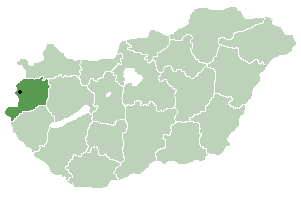Brief
History of Celldömölk
Celldömölk, the centre of Kemensalja is
located in the north-east of Vas county. Its current
population is 12 thousand people. Due to its
location, natural values as well as its religious
heritages it is the touristic centre of the region. The town situated at the foot of the Ság
hill has a 750 year history: it was born as the
merger of five neighbouring settlements: Pórdömölk,
Nemesdömölk, Kiscell, Alsóság and Izsákfa. The 1910
Map below indicates the location of the various
communities that make up Celldömölk.
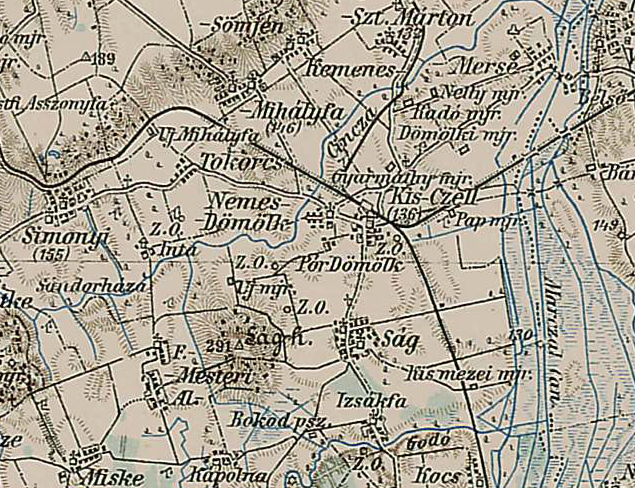
The seat of Celldömölk
district derived its name from the merger of Kiscell and
Nemesdömölk in 1904.
The census in 1828 already mentions Pórdömölk as a part
of Kiscell.
The foundation of Nemesdömölk was probably the trade
route nearby. However Kiscell, a growing settlement
absorbed it. Development was fuelled by the location of
the salt office, an important governmental office in
Kiscell. The settlement’s development was temporarily
stopped because of a fire and an epidemic in the 1780s.
In the 1790s Kiscell was able to hold fairs and became
an agricultural town. At the beginning of the 19th
century the economy of the settlement increased and it
became the centre of Kemenesalja. Its importance was
further increased by the completion of the railway
section of the Hungarian Western Railways that reached
Kiscell in 1871. The settlement soon became a railway
exchange point.
The most ancient settlements of the area are most
probably Alsóság and Izsákfa situated at the foot of Ság
hill. They were famous for their agricultural
activities. In 1950 Alsóság was mergd with Celldömölk
and in 1979 Izsákfa became the part of it as well.
Data on the Jewish residnts of these communities are
likely to be in the LDS
database under the original name of the community.
Source:
http://www.kemenesvulkanpark.hu/tourism/celldomolk
History of Jewish Presence
The 1725 census
indicates that there were 179 Jewish head of
households in Vas county. The various census indicate
that the Jewish families were scattered throughout the
county and that their overall numbers increased (402
households in 1783, 760 households in 1835). They were
mainly merchants, attended fairs or were peddlars.
In the 1977 Gazetteer(source below), in 1877 Kisczell
& Pordömölk were (now part of Celldömölk)
were listed as a community of 1,360 residents
including a Jewish population of 196 people with a
local place of worship in Kisczell. Nemesdömölk
had a population of 678 including a Jewish population
of 21 people whose place of worship was in Kisczell.
source: Genealogical Gazetteer of the Kingdom of
Hungary, compiled by Jordan Auslander, Avotaynu, 2005
There had been Jews in Nemesdömölk from 1746 on,
though never many. In 1746, two Jewish families with a
total of ten members lived in Nemesdömölk. Their
numbers grew to 33 in 1836, but declined to 28 in 1870
and to 15 in 1900.
The market town of Kiscell
did not admit Jews until 1840. Among the first to move
there was Zsigmond Pick, who moved from Nemedömölk to
Kiscell in 1841. With his son Henrik, he was involved
in the economic and social life of the community. In
1869 he was elected to the position of community judge
(this did not require a law degree). He initiated the
first oil lighting program in Kiscell. In 1888 he was
made a noble by Franz Joseph I (Emperor of Austria,
and King of Hungary).
In 1848 Celldömölk
counted 39 Jews, but for many decades they did not
build an independent community but belonged to the
Jewish congregation of Simonyi.
After the 1868 Jewish
Congress that took place in Pest, conflicts arose
between the Kiscell community which was open to
reformations and the orthodox mother community of
Simonyi.
In 1870 they separated and
Kiscell founded its own congregation. In 1872 it
bought property for a cemetery and founded a Chevra
Kadisha. As long as the community was small, services
were held in the neighboring village of Nemesdömölk.
Later the Jews in Kiscell rented a prayer house but
large celebrations were held in the Simonyi synagogue.
After the community became
independent, the 51 families had a synagogue built in
1882. The design was by Ludwig Schöne who had also
built the Szombathely synagogue. On March 21 a student
of the national institute for the training of rabbis,
still an aspirant rabbi back then, later Dr. Ede
Neumann, inaugurated the synagogue. It was the only
synagogue in the comitatus that did not have a women’s
gallery, the women sat on slightly higher seats on
both sides of the ground floor and participated at
those services that were accompanied by the organ.
Around 1900 conservative
Jews from the surrounding villages came to Celldömölk
and had a gallery built. They also wanted to have the
organ removed but the community did not comply to
that. The discontented orthodox left and founded their
own community in 1902. 1908 they built a small
synagogue for themselves, only the school and the
cemetery were shared with the neological Jews. There
are no synagogues left today.
The Jews of Celldömölk
always endeavored to live in peace with their
neighbors, yet several Jews were killed during the
white terror of 1919 – 1920. Soldiers broke into the
synagogue, captured the rabbi and the faithful,
desecrating the Torah scrolls, and incited the locals
to kill Jews. During the pogrom of August 23, 1919,
the rampaging mob robbed Jews and committed horrific
crimes against 11 Jews and murdered five others.
The last census of 1944
shows that there were 214 persons in the Celldömölk
congressional mother community and 285 orthodox
members. Altogether 394 Celledömölk Jews were deported
to the Jánosháza ghetto. After the war a mixed
community of neological and orthodox Jews was founded,
counting 81 people. Its last prayer hall was on
Szentháromság Square. The building still stands.
Sources:
http://www.scholemandfriends.com/JH/Vas/Jewish_Celldoemoelk.htm
Balázs Edit (ed.), Zsidó
Emlékek a Nyugat-Pannon Eurégióban (Burgenland,
Györ-Moson-Sopron, Vas és Zala megye), ISBN
978-963-06-4708-3
Braham Randolph L. (ed.), The Geographical Encyclopedia of the
Holocaust in Hungary, Northwestern University
Press 2013
From the Yad Vashem files,
click here for
a copy of the original list of Martyrs from Celldömölk and Alsoság. It is
quite breathtaking to view this old, typed list.
Searchable Databases
Search the JewishGen
Hungary Database. This is a
multiple database search facility which incorporates
all the databases listed below. These
databases have been contributed by the JewishGen
Hungarian Special Interest Group (H-SIG) and
individual donors. The combined databases have
more than 800,000 entries, referring to individuals
living in the current and former territory of
Hungary — this includes present Hungary, Slovakia,
Croatia, northern Serbia, northwestern Romania, and
subcarpathian Ukraine. The database is a work
in progress and new entries are being added
regularly.
The
New York Public Library has placed online 650
of the 700 postwar Yizkor books in their entirety.
LDS
Jewish Family History Resources (general
information)
|
Location of Vas County in Hungary
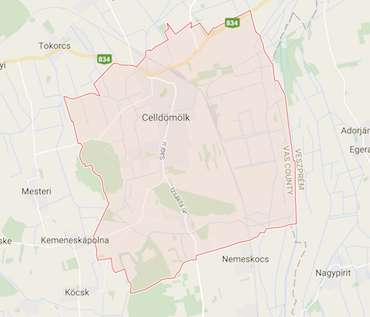
Celldömölk
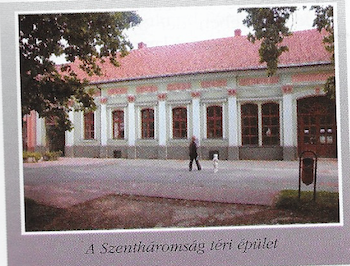
The Last Prayer Hoouse
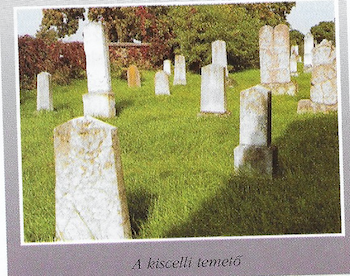
Kiscell Cemetary
JewishGen
Home Page
This site is
hosted at no cost by JewishGen, Inc., the Home of
Jewish Genealogy. If you have been aided in your
research by this site and wish to further our mission
of preserving our history for future generations,
Your
JewishGen-erosity is greatly appreciated.
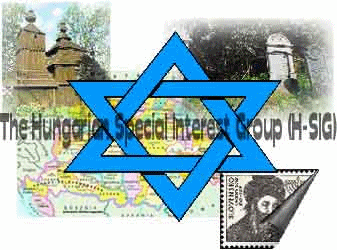
click here
for
The
JewishGen Hungarian Special Interest Group
|

